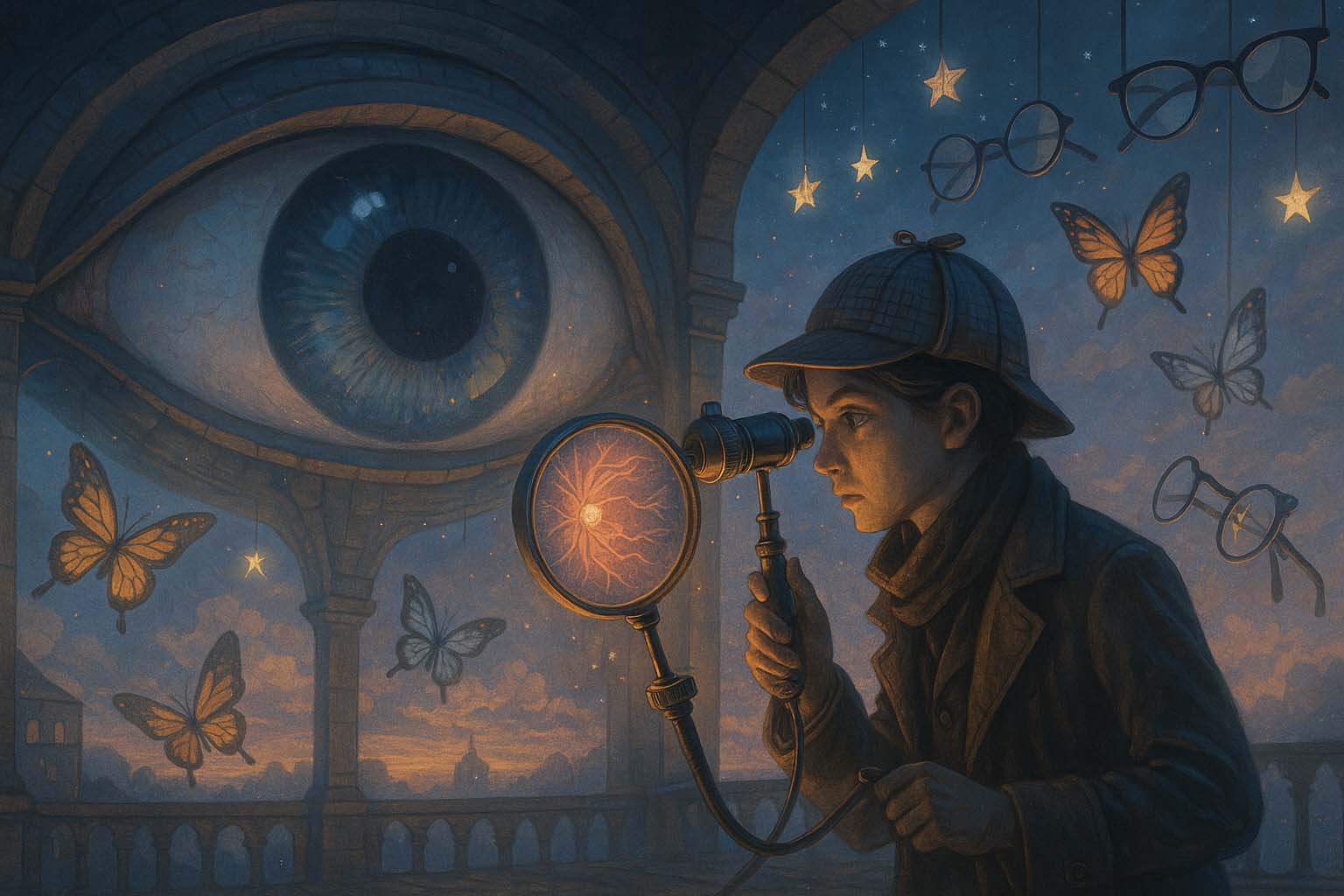
Ophthalmology
- Posted by admin
- Categories Core Surgical Specialties
- Date May 24, 2025
- Comments 0 comment
The Vision Detective’s Domain – Cracking the Cases of Clarity, Light, and the Windows to the Soul
1. Introduction: The Scene of the Specialty
Step into the shoes of an Ophthalmology sleuth.
This is the realm of refraction and retina, where tiny structures carry enormous meaning. Ophthalmologists peer into the eye not only to diagnose sight-related issues, but to spot early signs of systemic disease. Their work is delicate and dazzling—where lasers sculpt corneas, microinstruments lift cataracts, and the tiniest bleeds may reveal the biggest risks. Welcome to a world where vision is both symptom and signal, and the difference between blur and brilliance lies in a few microns.
2. Key Mysteries They Solve (Common Conditions)
These detectives specialise in solving cases involving:
- Cataracts – the cloudy mystery with a clear solution.
- Glaucoma – the silent thief of sight, caught with vigilance.
- Macular Degeneration & Diabetic Retinopathy – retinal clues to vascular damage and ageing.
- Refractive Errors & Eye Movement Disorders – bringing the world back into focus.
Each case blends optics, neurology, and art—where seeing clearly means understanding deeply.
3. Their Trusted Tools & Techniques
Every detective has their kit—and in Ophthalmology, tools may include:
- Slit Lamp & Retinal Imaging – magnifying windows into vascular and neurological health.
- Optical Coherence Tomography (OCT) – high-resolution scanning of retinal layers.
- Microsurgical Equipment – phacoemulsification, vitrectomy tools, and intraocular lenses.
- Laser Technology – for glaucoma, diabetic eye disease, and refractive corrections.
This is precision medicine at its most literal—vision restored, pixel by pixel.
4. The Charms of This Field: Why It Captivates the Curious
- Microscopic Mastery: Millimetres matter more than ever.
- High Impact, Low Risk: Sight-saving surgeries with rapid recovery and patient gratitude.
- Systemic Insight: The eyes can reveal diabetes, hypertension, MS, and more.
- Procedural Balance: Outpatient clinics, fine surgery, and longitudinal patient care.
This is the specialty where clarity is the craft—and seeing is believing.
5. Challenges: The Toughest Cases They Face
- Irreversible Loss – Late-stage glaucoma and macular disease often leave little to salvage.
- Emotional Toll – Losing vision is deeply tied to independence, identity, and quality of life.
- Patient Expectations – Surgical success is measured in millimetres—but perceived in miracles.
- Precision Fatigue – Long days of high-focus work demand rest and self-care.
But the seasoned ophthalmologist knows: the smallest adjustments often bring the brightest results.
6. Famous Cases and Hallmark Clues
- The “Classic Presentation” – Gradual bilateral vision loss with lens opacity: cataracts.
- The “Zebra” – Sudden painless monocular vision loss: central retinal artery occlusion.
- The “Aha Moment” – Floaters, flashes, and curtain-like visual loss: retinal detachment.
7. Your Training Trail: How to Join the Investigation
To become an Ophthalmology detective:
- Start with a strong grasp of neuroanatomy, vascular physiology, and systemic medicine.
- Learn slit lamp technique, fundoscopy, and OCT interpretation early.
- Train in microsurgery and develop exceptional hand–eye coordination.
- Cultivate precision, patience, and perceptiveness—your hands work where minds see meaning.
Whether you’re restoring vision through cataract surgery or catching a stroke through the retina, your work allows others to see the world anew.
8. Final Words: The Signature of the Ophthalmology Detective
Ophthalmology detectives protect the precious gift of sight.
They scan for shadows before they blind, restore light to darkened lenses, and see what others miss—within the eye, and beyond.
They bring artistry to anatomy, turning blurred futures into clear horizons.
So if you’re drawn to detail, precision, and the joy of helping others see—
then this is your domain of clarity and care.



